Abstract
From an experimental study on the linkage between dimer-tetramer association and oxygen binding in human hemoglobin it is found that triliganded tetramers α2β2(O2)3 have an affinity for oxygen that is significantly higher than that of α1β1 dimers (superscripts denote intersubunit contacts). This conclusion is based upon a newly determined series of accurate oxygen binding isotherms, which were analyzed in conjunction with independently determined values of the dimer-tetramer equilibrium constants in the unliganded and fully oxygenated states [Ip, S. H. C. & Ackers, G. K. (1977) J. Biol. Chem. 252, 82-87]. The results imply that in the molecule α2β2(O2)3 the interactions at the α1β2 intersubunit contacts are propagated to the unliganded heme in a manner that increases its affinity for oxygen. This effect contrasts sharply with the well-known reduction in oxygen affinity arising from these same contacts when unliganded dimers are assembled to form unliganded α2β2 tetramers. The magnitude of the enhancement in affinity at the unliganded site in triliganded tetramers (0.81 kcal, 3.39 kJ) is approximately one-fourth as great as the reduction in affinity on each heme site that arises from subunit assembly of the unliganded tetramer. The terms “quaternary constraint” and “quaternary enhancement” are employed to describe these oppositely directed effects of intersubunit interaction upon heme-site affinity. Experimental results also suggest that dimers bind oxygen with a higher affinity than monomeric α and β chains do under the same temperature and buffer conditions (21.5°C, pH 7.40, 0.1 M Tris·Hcl/0.1 M NaCl/1 mM Na2EDTA). Thus quaternary enhancement may be manifested at the α1β1 contacts. Implications of these results for models of the cooperative mechanism are discussed.
Keywords: allostery, Thermodynamics, proteins, linkage
Full text
PDF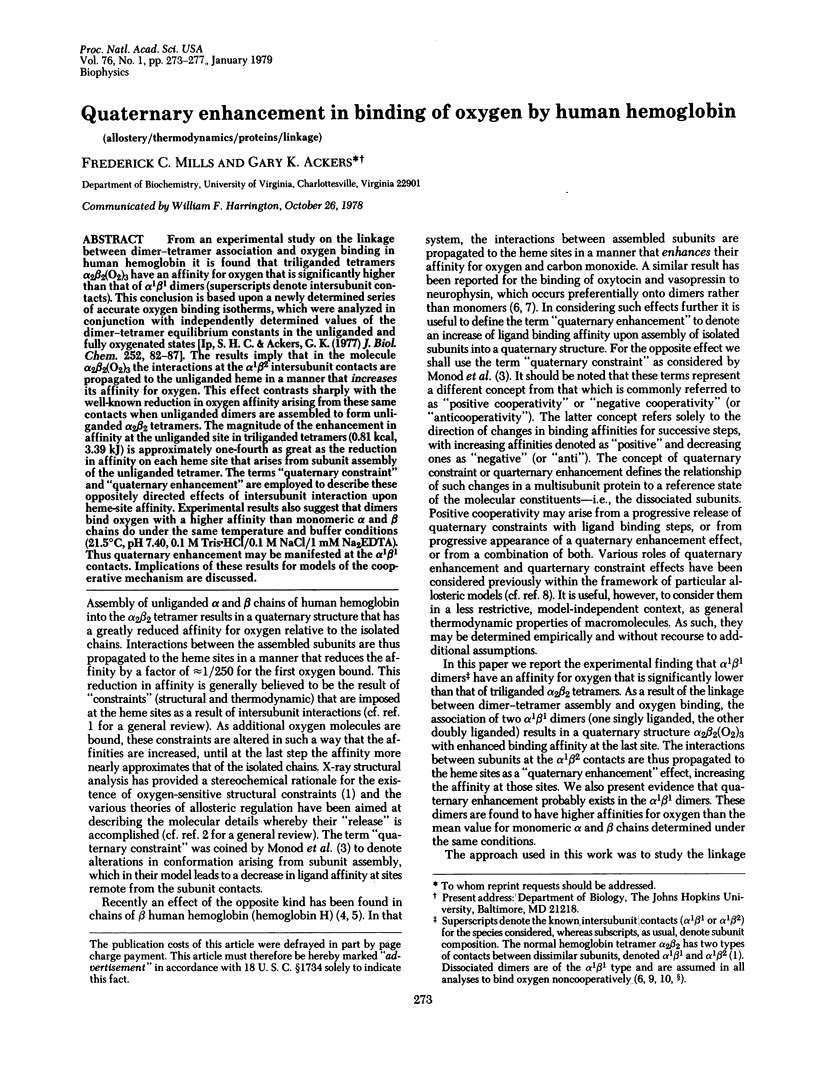
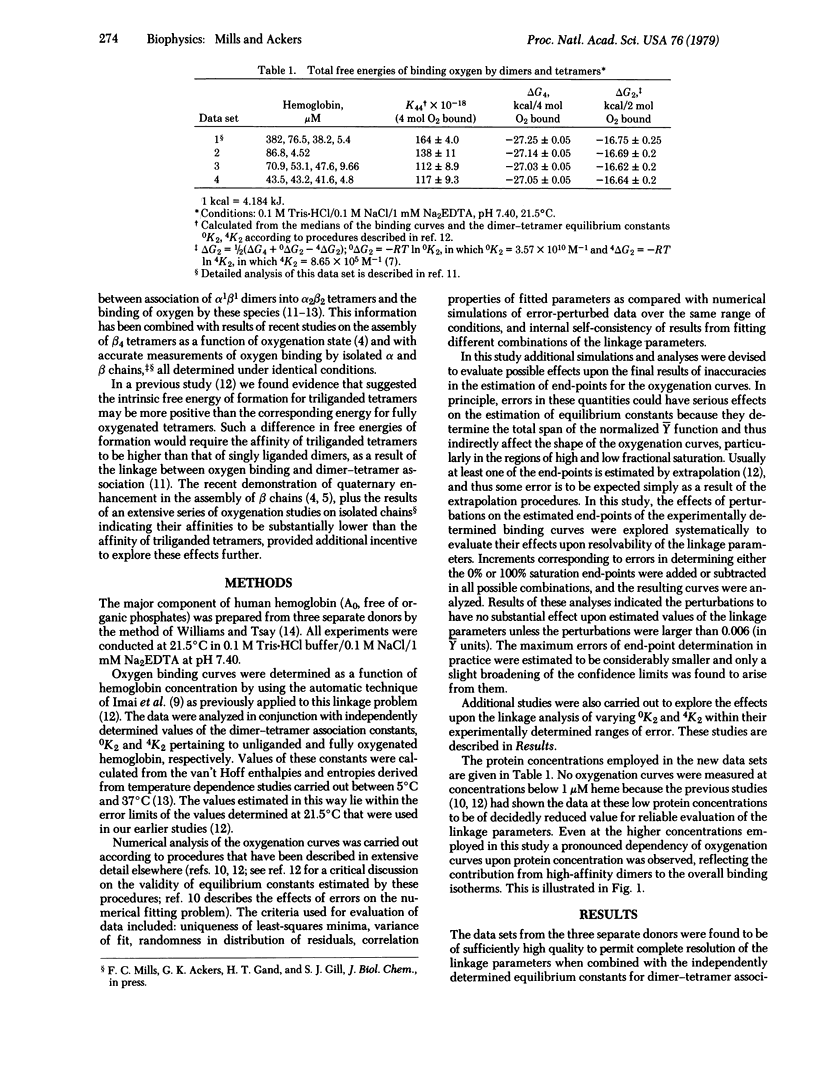
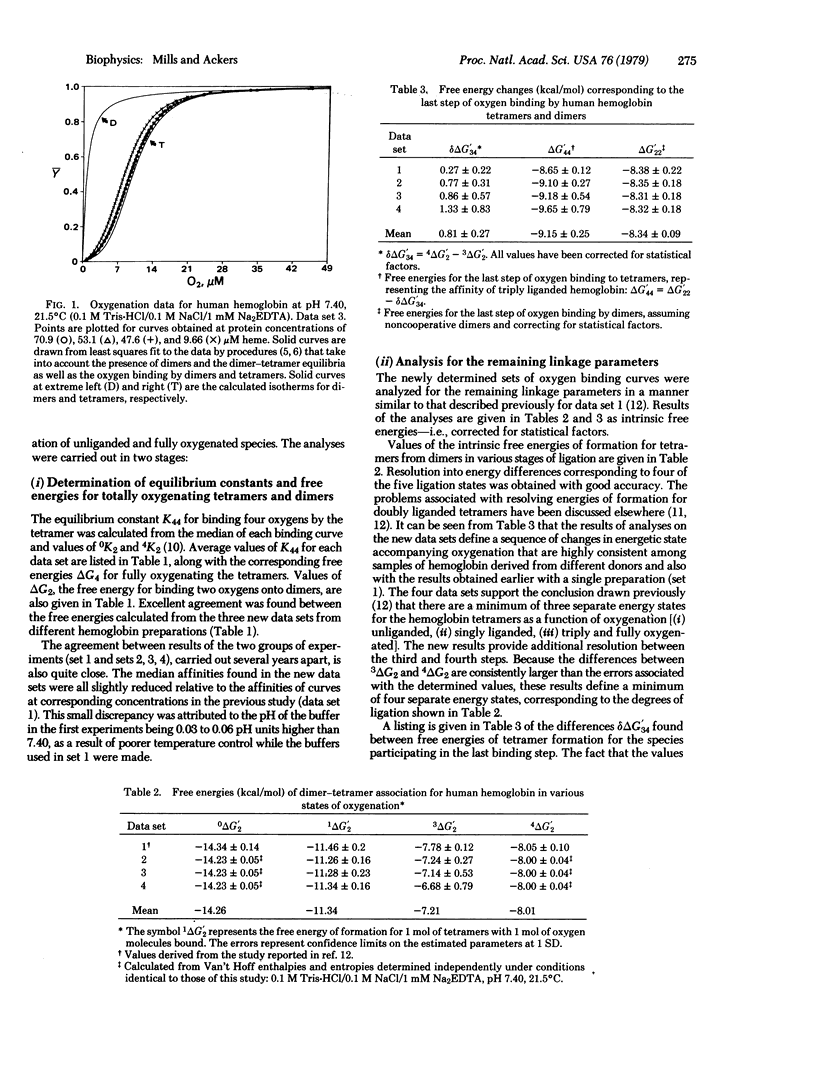
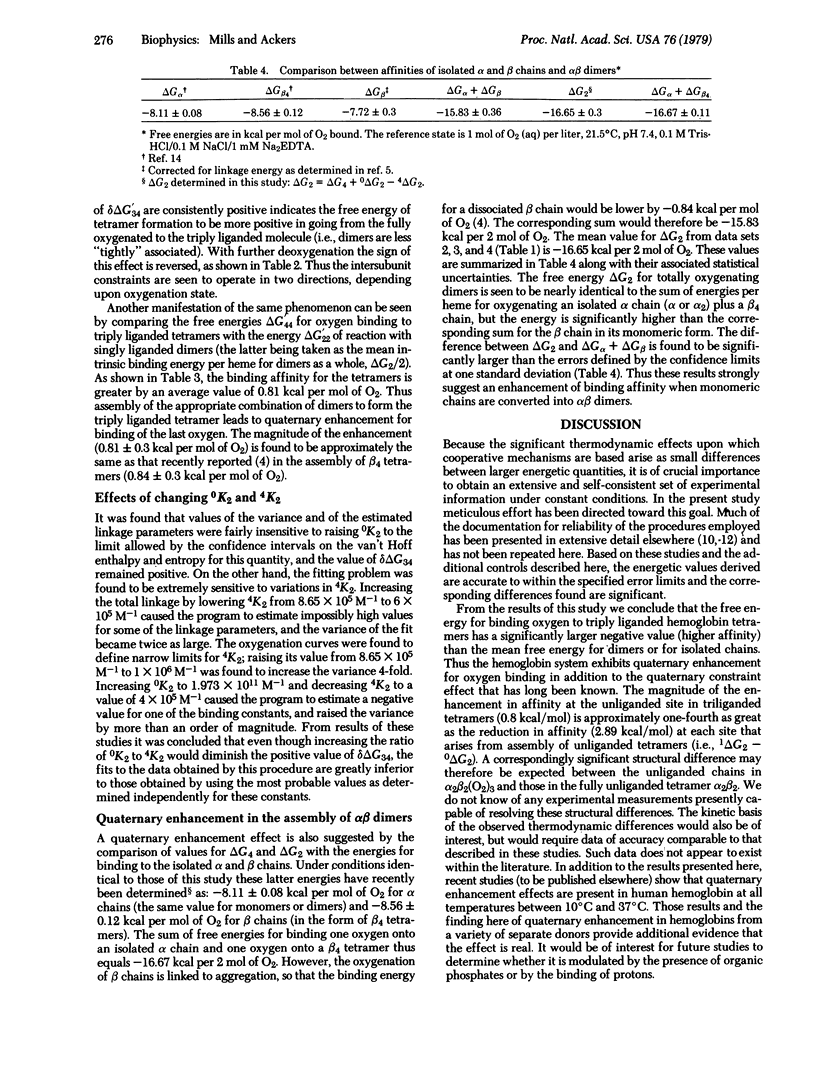
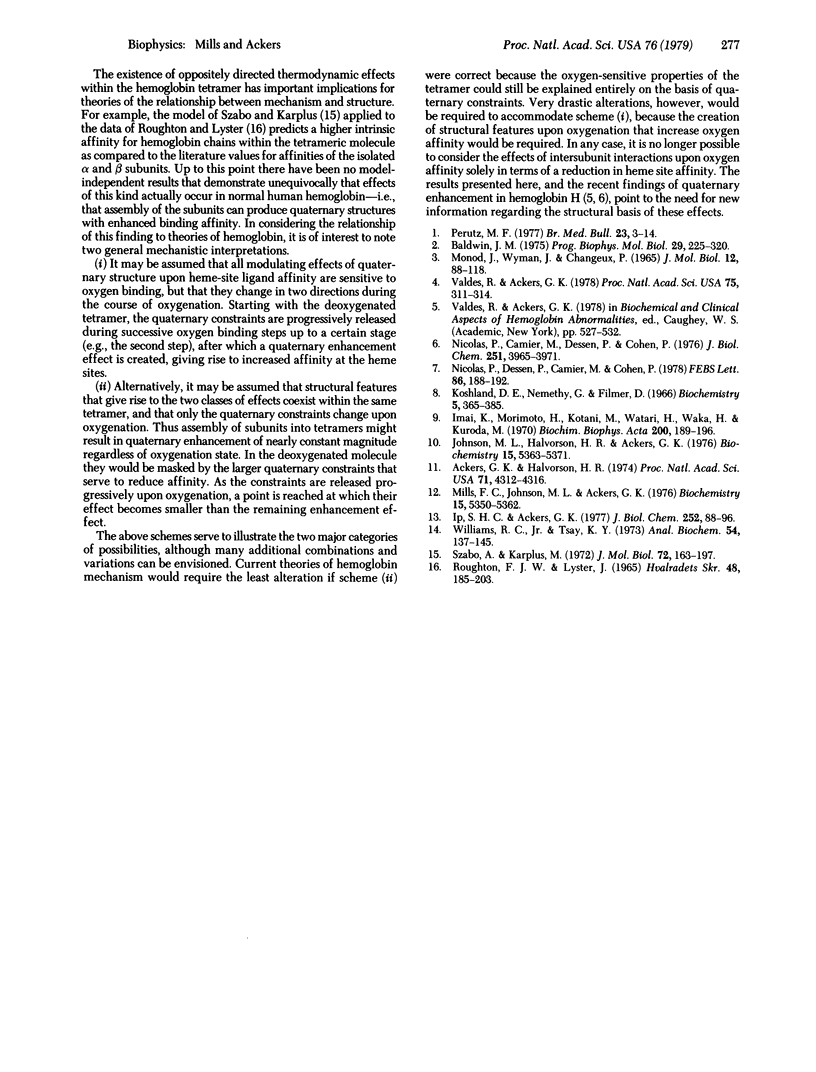
Selected References
These references are in PubMed. This may not be the complete list of references from this article.
- Ackers G. K., Halvorson H. R. The linkage between oxygenation and subunit dissociation in human hemoglobin. Proc Natl Acad Sci U S A. 1974 Nov;71(11):4312–4316. doi: 10.1073/pnas.71.11.4312. [DOI] [PMC free article] [PubMed] [Google Scholar]
- Baldwin J. M. Structure and function of haemoglobin. Prog Biophys Mol Biol. 1975;29(3):225–320. doi: 10.1016/0079-6107(76)90024-9. [DOI] [PubMed] [Google Scholar]
- Imai K., Morimoto H., Kotani M., Watari H., Hirata W. Studies on the function of abnormal hemoglobins. I. An improved method for automatic measurement of the oxygen equilibrium curve of hemoglobin. Biochim Biophys Acta. 1970 Feb 17;200(2):189–196. doi: 10.1016/0005-2795(70)90163-7. [DOI] [PubMed] [Google Scholar]
- Johnson M. L., Halvorson H. R., Ackers G. K. Oxygenation-linked subunit interactions in human hemoglobin: analysis of linkage functions for constituent energy terms. Biochemistry. 1976 Nov 30;15(24):5363–5371. doi: 10.1021/bi00669a024. [DOI] [PubMed] [Google Scholar]
- Koshland D. E., Jr, Némethy G., Filmer D. Comparison of experimental binding data and theoretical models in proteins containing subunits. Biochemistry. 1966 Jan;5(1):365–385. doi: 10.1021/bi00865a047. [DOI] [PubMed] [Google Scholar]
- MONOD J., WYMAN J., CHANGEUX J. P. ON THE NATURE OF ALLOSTERIC TRANSITIONS: A PLAUSIBLE MODEL. J Mol Biol. 1965 May;12:88–118. doi: 10.1016/s0022-2836(65)80285-6. [DOI] [PubMed] [Google Scholar]
- Mills F. C., Johnson M. L., Ackers G. K. Oxygenation-linked subunit interactions in human hemoglobin: experimental studies on the concentration dependence of oxygenation curves. Biochemistry. 1976 Nov 30;15(24):5350–5362. doi: 10.1021/bi00669a023. [DOI] [PubMed] [Google Scholar]
- Nicolas P., Camier M., Dessen P., Cohen P. Interactions of oxytocin and vasopressin with bovine neurophysins I and II. Effects of hormone binding on the protein quaternary structure: a simple model. J Biol Chem. 1976 Jul 10;251(13):3965–3971. [PubMed] [Google Scholar]
- Nicolas P., Dessen P., Camier M., Cohen P. Cooperative binding of ocytocin to bovine neurophysin. A comparison of two theoretical models. FEBS Lett. 1978 Feb 15;86(2):188–192. doi: 10.1016/0014-5793(78)80560-2. [DOI] [PubMed] [Google Scholar]
- Szabo A., Karplus M. A mathematical model for structure-function relations in hemoglobin. J Mol Biol. 1972 Dec 14;72(1):163–197. doi: 10.1016/0022-2836(72)90077-0. [DOI] [PubMed] [Google Scholar]
- Valdes R., Jr, Ackers G. K. Self-association of hemoglobin betaSH chains is linked to oxygenation. Proc Natl Acad Sci U S A. 1978 Jan;75(1):311–314. doi: 10.1073/pnas.75.1.311. [DOI] [PMC free article] [PubMed] [Google Scholar]
- Valdes R., Jr, Ackers G. K. Thermodynamic studies on subunit assembly in human hemoglobin. Calorimetric measurements on the reconstitution of oxyhemoglobin from isolated chains. J Biol Chem. 1977 Jan 10;252(1):88–91. [PubMed] [Google Scholar]
- Williams R. C., Jr, Tsay K. Y. A convenient chromatographic method for the preparation of human hemoglobin. Anal Biochem. 1973 Jul;54(1):137–145. doi: 10.1016/0003-2697(73)90256-x. [DOI] [PubMed] [Google Scholar]


